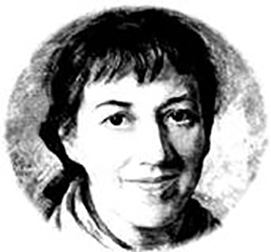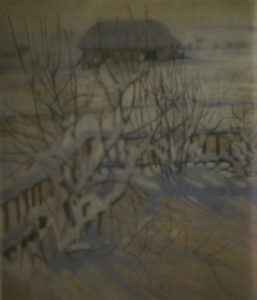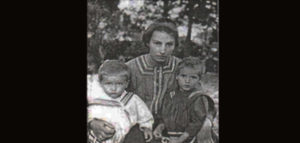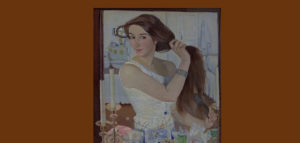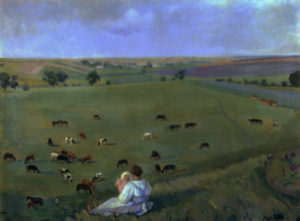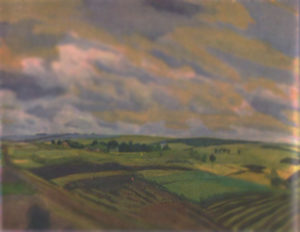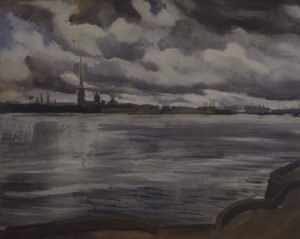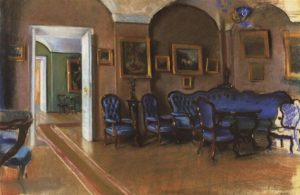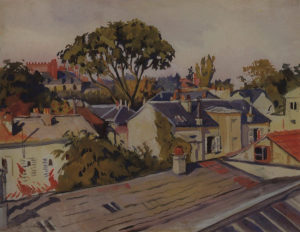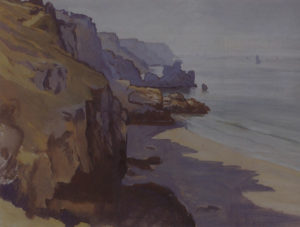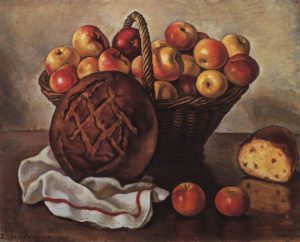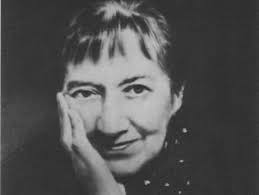Zinaida Serebriakova was born on December 10, 1884 in the village of Neskuchnoye, Kursk province, the Russian Empire (now Kharkiv region of Ukraine).
1884 - 1967
Zinaida Serebriakova
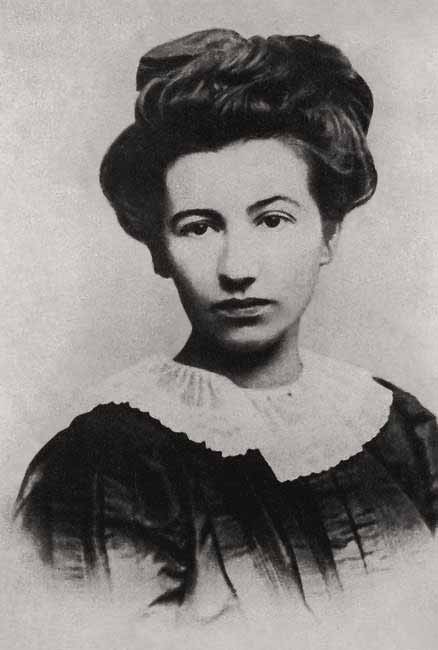
description
An outstanding Ukrainian artist, a painter and graphic artist who worked in Russia and France, a member of “The World of Art”, one of the first women who simultaneously entered the history of painting of Ukraine, Russia and France. Known for the portraits of outstanding people of her time, paintings on rural themes and monumental paintings.
Zinaida was born into a family of prominent masters. Nikolai Benois, the grandfather of her mother, was a famous architect, her father Eugene Lansere, who died early, was a famous sculptor, her uncle, A. Benois, was an outstanding contemporary artist. After the death of the head of the family in 1886, the mother and six of her children moved to St. Petersburg, but they spent each summer at Neskuchnoye and Veseloye estates. The family visited the Hermitage and theaters, did not miss a single exhibition. All relatives were engaged in creative work and encouraged the studies of Zina, who had been painting since childhood. The choice of the portrait genre was prompted by communication with numerous relatives – bright masters (uncle A. Benois, brothers Lansere, etc.) and guests, such as K. Somov, A. Akhmatova, J. Annenkov. Later, in Paris, she painted S. Prokofiev, artist S. Ivanov, and others.
Due to the tragically developing life (and political) circumstances, and also because of her very modestly shy and unpractical nature, Z. E. Serebryakova received deserved recognition only in the 1960s, when a number of exhibitions successfully took place in several cities of Russia. In France, the artist was rarely exhibited, but her magnificent portraits were popular. In the homeland of the artist in the village of Neskuchnoye near Kharkov, there are “Neskuchnoye plein-airs” of her name, and there is The Serebryakova’s Foundation created by her children Alexander and Catherine in France. Critics and connoisseurs characterized Serebryakova as an outstanding master of “European significance”, but the voice of the artist, whose art was almost realistic, drowned in the noise around abstract arts and other new delights. In art history, however, there are terms “serebryakova’s painting” and ” serebryakova’s portrait”. The canvases of the artist adorn the collections of the best museums of Europe, Ukraine and Russia.
Key Ideas:
– Since the time of her apprenticeship, Z. Lansere tried to express her admiration for the beauty of the world in her works. Her early paintings, performed in a style close to Post-Impressionism (“Garden in Blossom”, 1908, etc.) tell of the search for harmony and the acute emotions from the charm of their native land. Even having joined the society of avant-garde artists “The World of Art”, the artist was distinguished by her style, which is characterized by plasticity, and love for stories, simple and clear to everyone.
– If in St. Petersburg Zinaida was formed as a person, then her talent blossomed in her beloved Neskuchnoye – every scrap of this ground excited the artist. The perfection of the technique in combination with freshness of color and purity of irreproachably chosen tones attracts the viewer in the landscapes of the artist. She includes the figures of people or simple buildings, in the composition as an element of the organization of space.
– Portraits by Z. Serebryakova are alive, full of light and optimism – this attitude to nature was preserved by the artist even later, when she painted Moroccan women and Moroccans. The same vivid emotion is conveyed by a large cycle depicting peasant women – working, sleeping, and taking bath.
– Very resonant, breathing clear freshness palette of the artist is close in its style to Fauvism and Expressionism, and to some extent to Realism, because she did not refuse to please the newest trends from an almost correct perspective. At the same time, she used large planes in a local bright color, which gave the canvases a decorative sound. The classics of the art of the early 20th century included such paintings as “At the Dressing-Table” (a self-portrait of the artist) and “Green in Autumn” (both were purchased by The Tretyakov Gallery at the first Zinaida’s exhibition), as well as famous “Harvest”, surprising not only with its rich color, but also by the clarity of characters. In the same period of the heyday of her career and personal well-being, painting ” The whitening of the canvas” was created. For its composition, the master chose an underlined low horizon line, due to which, against the sky, the silhouettes of peasant women acquired monumentality.
– Z. Serebryakova created many portraits of dancers (Benois flat was “condensed” by the theater artists). Among the friendly-clear-eyed beauties typical for the artist, there are such paintings as “Blue dancers” in the series – anxious strokes of the brush, chaotic-restless lines and some sketchiness of the work express the worries of the master for her fate and the fate of her children.
1884
1900
1902 - 1907
1910 - 1911
1912 - 1916
1916
1919
1920 - 1924
1924
1928
1940
1960
1967
The birth of the artist
She entered the private art school of Princess M. Tenisheva
After graduating from the women’s gymnasium, she entered the private art school of Princess M. Tenisheva, where for two years her teacher was O.E. Braza, an artist and engraver, an outstanding portraitist and member of the World of Art.
Traveled to Italy
Traveled to Italy, studied at the Academy de la Grande Chaumiere in Paris, where she was taught by Spanish innovator K. Castelluccio, who was very popular among students. In 1905, having overcome the obstacles on the part of the spiritual authorities, she married her cousin, engineer Boris Serebryakov. In the next 2 years, the couple had sons, Eugene and Alexander.
Her paintings were noticed
Was a guest at the big seventh exhibition of “The World of Art”, where her paintings were noticed, and two of them, “At the dressing-table” and “Green Autumn”, were purchased by Pavel Tretyakov for his famous Moscow gallery. Soon the artist became an official member of this St. Petersburg association.
Serebryakovs got their daughters
Serebryakovs got their daughters, Tatyana and Ekaterina. Zinaida Evgenievna worked a lot in Neskuchny, referring to the rural themes, performing many portraits, including family ones.
She was invited by Alexander Benois to work on the paintings of the Moscow station of Kazan
She was invited by her uncle Alexander Benois (together with E. Lansere, B. Kustodiev, M. Dobuzhinsky) to work on the paintings of the Moscow station of Kazan; taking the theme of the East, introduced four countries in the form of allegorical beauties. She worked on the themes from Slavic mythology (the cycle of paintings remained unfinished).
Became a widow
Became a widow (the husband died of typhus) with young children and an elderly sick mother. The family’s estate was plundered and burned, the artist started working as a draftsman at the archaeological museum of Kharkov (sketches of exhibits). She painted “The House of Cards”, a tragic work depicting her orphaned children.
Moved with her family to Petrograd
Moved with her family to Petrograd, having received an offer to work in the Petrograd department of museums or take a professorship at the Academy of Arts, but preferred to work in a workshop. In her grandfather’s grand apartment, the artists of the Mariinsky Theater were accommodated, and the artist created many paintings and portraits on the themes of theatrical life. Performed individual orders to earn her living.
14 paintings by the artist were successfully presented at the exhibition in New York
14 paintings by the artist were successfully presented at the exhibition in New York, a special interest was caused by “The sleeping naked girl on a red blanket”, painted in 1923 – this work and one still life were bought, which greatly supported the Serebryakov family. The artist received an order for the creation of a large decorative panel in Paris and left for France, as it turned out, forever.
The artist enthusiastically worked in Brittany
Two of the children – Catherine and Alexander – with the help of the Red Cross were reunited with their mother in Paris and were her faithful assistants for the rest of her life. The artist enthusiastically worked in Brittany (a cycle dedicated to fishermen) and in Morocco (the second time she visited her daughter in this country was in 1932).
Continued to earn a living by painting portraits
Continued to earn a living by painting portraits, received French citizenship, made creative trips to the south of France and Switzerland. Sometimes personal exhibitions were organized in Paris.
The State Russian Museum bought 21 paintings
After the 36-year-separation, the artist was visited by her daughter Tata (Tatiana has already become popular in Russia, albums with reproductions were published in millions of copies). She helped organize the return of her mother’s work to her homeland – in 1966, large expositions of works by Z. Serebryakova were held in Moscow, Leningrad, Kiev. Forgotten for decades, the artist became famous – only the State Russian Museum bought 21 paintings.
The death
She died on September 19, 1967 in Paris, France.

